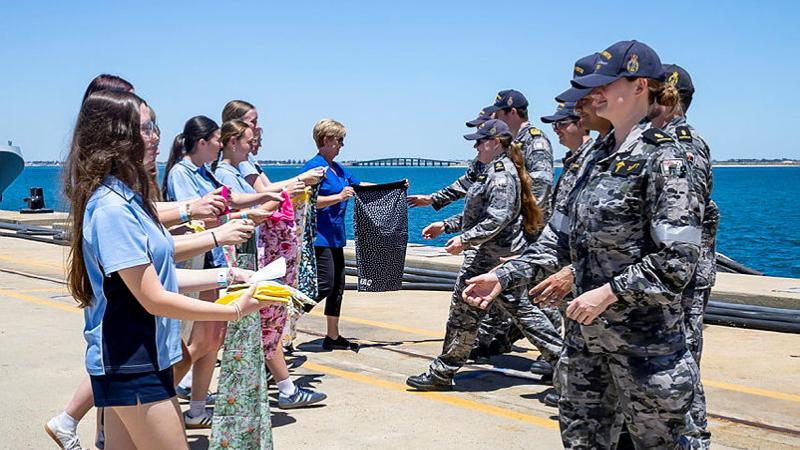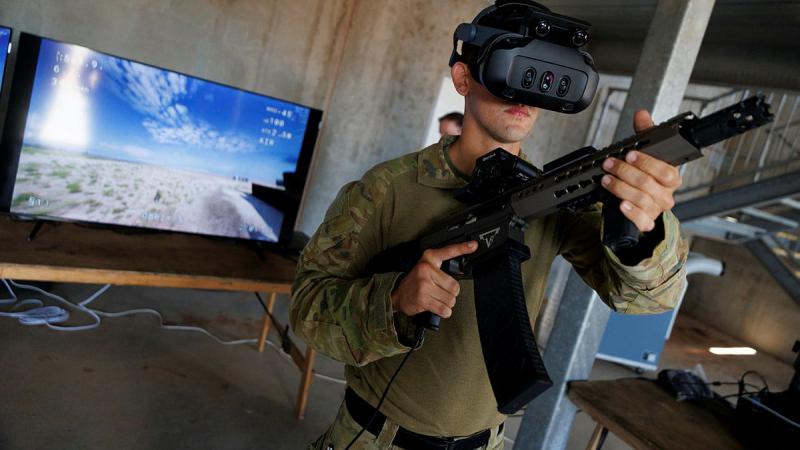29 July 2025
The northern skies of Queensland filled with the roar of P-8A Poseidons as Exercise Talisman Sabre 2025 brought together maritime patrol forces from Australia, New Zealand, and the United States in a powerful demonstration of allied air power and tactical cohesion.
At the centre of the operation was the Royal Australian Air Force’s 11 Squadron, led by Detachment Commander Squadron Leader Stephen Camillo, who guided the Australian P-8A Poseidon crew through a series of high-intensity anti-submarine warfare (ASW) missions.
“The P-8A is, from the ground up, an ASW platform,” Squadron Leader Camillo said.
“Talisman Sabre is an important activity for us as it provided the opportunity to exercise capability as part of a combined Air Force, Royal New Zealand Air Force, and United States Navy detachment.
“We are developing relationships and procedures that underpin our ability to operate effectively together.”
With all three nations operating the Poseidon, the focus was on aligning tactics, procedures, and logistics to ensure seamless cooperation in future operations.
“At No. 11 Squadron, we aimed to go beyond working together with our allied partners and into interchangeability,” Squadron Leader Camillo said.
“This exercise enabled us to align our tactics and procedures so we could operate together without concessions, enhancing flexibility and agility.”
'That’s what tactical trust looked like. It was personal, it was technical, and it was collaborative.'
Deployed under Task Force 72 in Japan, and detached for the exercise, United States Navy Patrol Squadron 9 Lieutenant Commander David Locker echoed the importance of this alignment.
“We planned together, briefed together, and flew together,” Lieutenant Commander Locker said.
“That’s what tactical trust looked like. It was personal, it was technical, and it was collaborative.”
For Royal New Zealand Air Force 5 Squadron’s Squadron Leader Phillip Ziesler, the exercise offered a rare opportunity to operate in a complex, multinational environment.
“Talisman Sabre brought the kind of complexity we couldn’t replicate at home,” Squadron Leader Ziesler said.
“It was about real-time operations with different nations and assets in one battlespace.”
For all three nations, the goal was clear to improve joint operational readiness and capability in the Indo-Pacific.
“New Zealand and the United States are key partners,” Squadron Leader Camillo said.
“Together, we have a history of working in support of our national interests, and this exercise helped us progress that partnership and prepare for future operations.”
'With the New Zealand P-8A capability being realised, the exercise allowed us to expand their involvement.'
The shared platform of the Poseidon also enabled embedded operations. During the exercise, New Zealand aircrew flew aboard Air Force P-8As, a move that reflected the growing trust and capability between the nations.
“With the New Zealand P-8A capability being realised, the exercise allowed us to expand their involvement,” Squadron Leader Camillo said.
“We leveraged deployed New Zealand aircrew in support of flying operations.
“It was a flexible approach that allowed us to learn from each other and maintain alignment.”
The P-8A crew consisted of a diverse team of specialists. From the aircraft captain and co-pilot to the tactical coordinator (TACCO), co-TACCO, and sensor operators, each role was essential.
Acoustic warfare operators monitored sonobuoys and identified submarine signatures, while electronic warfare operators used radar to detect periscopes and surface vessels.
Additional crew members managed ordnance systems and sonobuoy deployment.
Logistics were also streamlined. Sonobuoy compatibility across the three nations opened the door to shared stocks and supply chains.
“The agreement between the United States and Air Force was a perfect example of how well this could work,” Squadron Leader Camillo said, noting that sonobuoy sharing was expected to occur during the exercise.
Each mission was a tightly coordinated effort. Crews arrived before take-off for mission briefings, planning, and pre-flight checks.
'The debrief was critical. It was where we captured the lessons of the day and fed them back into the next mission.'
Once airborne, they transited to the exercise area and coordinated with allied ships and aircraft to undertake their mission. After several hours of tracking and tactical manoeuvring, they often handed off the target to another nation’s aircraft before returning to base for debriefing.
“The debrief was critical,” Squadron Leader Camillo said. “It was where we captured the lessons of the day and fed them back into the next mission.”
As the exercise concluded, the message from the flight deck was unmistakable: shared platforms, shared tactics, and shared trust formed the foundation of allied strength in the region.


